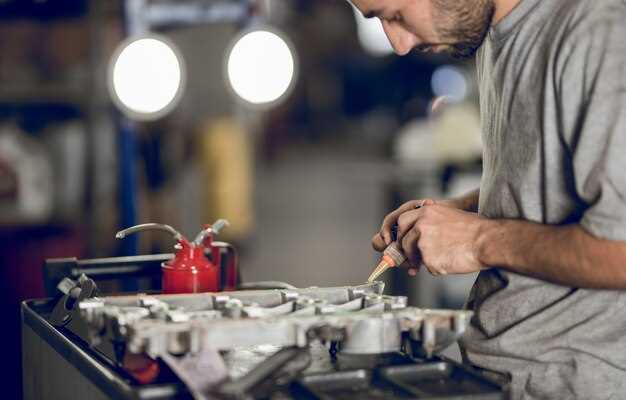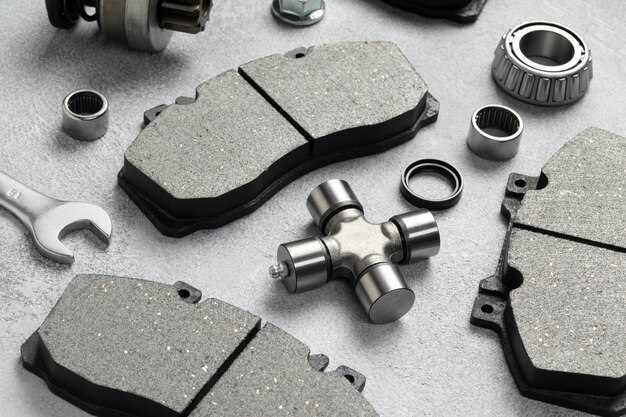
When it comes to optimizing engine performance, selecting the right camshaft is a critical decision that can significantly influence power output, efficiency, and overall vehicle dynamics. The camshaft plays a vital role in controlling the timing, duration, and lift of the engine’s valves, making it one of the most influential components in an engine build. Understanding the characteristics and specifications of different camshafts is essential for achieving the desired performance metrics.
Each engine has unique requirements, influenced by factors such as engine size, intended use, and existing modifications. For instance, a high-performance racing engine may benefit from a camshaft designed for maximum lift and duration, while a daily driver might require a camshaft that enhances torque at lower RPMs. The challenge lies in aligning the camshaft’s profile with your engine’s specific needs and your performance goals.
In this article, we will delve into the essential aspects of camshaft selection, exploring different types, profiles, and how they affect engine performance. By the end, you will have a clearer understanding of how to choose the best camshaft that aligns with your engine setup and performance aspirations, ensuring you make an informed choice for optimal results.
Understanding Camshaft Profiles and Their Impact on Performance
The camshaft profile is a critical factor in determining an engine’s performance characteristics. It influences how air and fuel enter the combustion chamber and how exhaust gases exit, impacting horsepower, torque, and overall engine efficiency. Camshaft profiles are defined by specific parameters, including lift, duration, and lobe separation angle.
Lift refers to how far the valve opens, with higher lift allowing more air and fuel into the engine. This can lead to increased power but may also require more precise tuning and adjustments to the rest of the engine components. Duration indicates how long the valve stays open during the engine cycle; longer durations typically promote higher RPM performance but can sacrifice low-end torque and drivability.
The lobe separation angle affects the overlap between the intake and exhaust valves. A narrower separation can enhance throttle response and high-end power but may result in rough idling and reduced efficiency at lower RPMs. Conversely, a wider angle can improve idle quality and low-end torque but may limit peak power.
Choosing the right camshaft profile is essential for optimizing an engine’s performance to meet specific needs, whether for street driving, racing, or heavy-duty applications. It is vital to balance these parameters to achieve the desired performance without compromising reliability or efficiency.
Understanding the implications of different camshaft profiles enables enthusiasts and builders to make informed choices tailored to their engine specifications and performance goals. Properly matched camshaft profiles can lead to significant enhancements in engine responsiveness, power output, and overall driving experience.
Matching Camshaft Specifications to Engine Types and Applications

Choosing the right camshaft is crucial for optimizing engine performance. Different engine types and applications demand specific camshaft specifications to achieve the desired balance of power, torque, and efficiency. Understanding how these specifications correlate with engine characteristics can enhance overall performance and responsiveness.
Engine Types
There are primarily two categories of engines: naturally aspirated and forced induction. Naturally aspirated engines rely on atmospheric pressure for air intake, requiring camshafts with a profile that promotes higher RPMs and better airflow for optimal performance. These camshafts typically feature longer duration and higher lift to enhance the engine’s ability to breathe at higher engine speeds.
In contrast, forced induction engines, such as turbocharged or supercharged engines, require camshaft specifications that optimize performance across a broader RPM range. These camshafts usually have a milder profile to maintain boost pressure and minimize lag, focusing on improving low-end torque and throttle response.
Applications
The intended application of the engine also plays a significant role in determining the right camshaft. For instance, street performance engines typically prioritize drivability and fuel efficiency, necessitating camshafts with characteristics that support smoother power delivery and ease of use in everyday conditions. These camshafts often feature a moderate lift and duration to maintain usable power throughout the RPM range.
Racing applications, however, demand an entirely different approach. High-performance camshafts for racing engines are designed with aggressive profiles that maximize power output at higher RPMs. These camshafts may sacrifice low-end torque for peak horsepower, requiring careful consideration of the entire engine setup, including intake and exhaust systems.
Compatibility with Engine Components
When selecting a camshaft, it is essential to consider its compatibility with other engine components. The valve train, cylinder head, and exhaust system must complement the cam profile to ensure efficient operation. For example, a camshaft with high lift and duration may necessitate upgraded valve springs and retainers to handle the increased stress, while a performance exhaust system can optimize the benefits of a more aggressive camshaft.
Conclusion
Matching camshaft specifications to engine types and applications requires a thorough understanding of your engine’s characteristics and intended use. By considering factors such as engine type, application, and compatibility with other engine components, you can make an informed decision that maximizes performance and efficiency.
Analyzing Aftermarket Options vs. OEM Camshaft Choices

When it comes to upgrading or replacing a camshaft, enthusiasts are often faced with the decision between aftermarket options and Original Equipment Manufacturer (OEM) choices. Each category brings distinct benefits and drawbacks, making it essential to analyze their differences carefully.
OEM camshafts are designed to meet the specifications set by the vehicle manufacturer. They provide reliability and assurance that the component will perform effectively within the designed parameters of the engine. Since they are tailor-made for specific models, OEM parts typically involve easier installation and less risk of compatibility issues. Additionally, they offer a warranty and consistent quality control standards.
On the other hand, aftermarket camshafts cater to a broader range of preferences and performance needs. Manufacturers of aftermarket parts often aim to enhance engine performance by improving horsepower, torque, or fuel efficiency. These camshafts come in various profiles, allowing enthusiasts to select a component that suits their specific performance goals, such as increasing power at higher RPMs or optimizing mid-range torque.
One potential drawback of aftermarket camshafts is their variation in quality. While many reputable brands offer high-performance options, some low-cost alternatives may compromise reliability or durability. Conducting thorough research on the manufacturer’s reputation and user reviews is crucial when selecting an aftermarket part.
Moreover, it’s essential to consider the impact of an aftermarket camshaft on the overall engine dynamics. Changes in lift and duration can necessitate additional modifications to other engine components, including valves, springs, and the fuel system, thereby increasing overall costs and complexity.
In conclusion, choosing between aftermarket and OEM camshafts depends on individual performance goals, budget considerations, and willingness to undertake potential modifications. For those prioritizing reliability and ease of installation, OEM may be the best choice. In contrast, performance enthusiasts seeking significant power gains should explore well-reviewed aftermarket options, weighing the risks and benefits that come with them.


